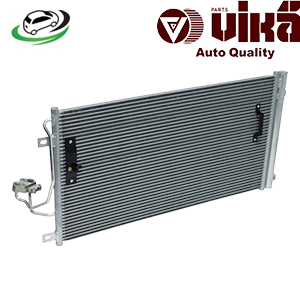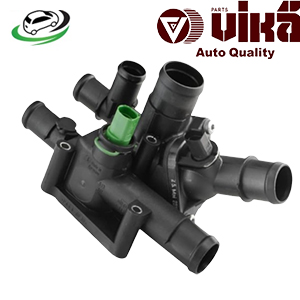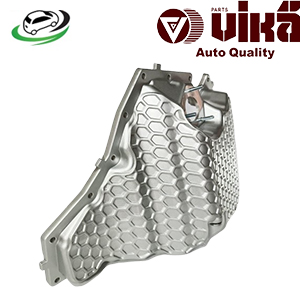-11%
Get AUDI C7 A6 2.0T/ C7 A6 2.0T Oil Sump 06L103600F
The oil sump is a vital part of an internal combustion engine, primarily functioning as the reservoir for engine oil. It is located at the engine’s base and plays a crucial role in lubrication, heat management, and debris containment. Understanding how it works, its benefits, how to detect wear and tear, and maintenance tips can help ensure optimal engine performance.
Function of the Oil Sump
The oil sump, or oil pan, is responsible for collecting, storing, and managing the oil that circulates through the engine. Its primary functions are:
- Oil Reservoir: The sump acts as a storage chamber, holding engine oil after it has circulated through the engine. It ensures there’s always enough oil for lubricating and protecting the engine’s moving parts.
- Cooling the Oil: After oil circulates through the engine, it returns to the sump to cool down. The sump’s metal surface helps dissipate the heat that the oil has absorbed from the engine.
- Contaminant Collection: Contaminants like metal shavings and dirt accumulate in the oil over time. The sump allows these particles to settle at the bottom, which helps prevent them from recirculating through the engine.
- Oil Drainage: The sump features a drain plug, making oil changes easy by allowing old oil to be drained out quickly.
- Structural Support: Although it’s not its primary role, the oil sump provides some structural protection to the lower engine components, shielding them from debris and road hazards.
Types of Oil Sumps
- Wet Sump: Found in most standard vehicles, the wet sump holds oil in the pan located directly below the engine. It relies on an oil pump to circulate oil from the sump back through the engine.
- Dry Sump: In high-performance or racing vehicles, dry sumps store oil in a separate tank. This type provides better oil flow under extreme driving conditions but is more complex and expensive.
Benefits of the Oil Sump
- Consistent Lubrication: By ensuring there’s always a ready supply of oil, the sump guarantees consistent lubrication, reducing friction and wear on engine parts.
- Effective Cooling: By collecting and cooling oil before it’s recirculated, the sump helps prevent the engine from overheating, thus prolonging engine life.
- Easy Oil Changes: The drain plug in the sump allows for convenient oil changes, ensuring fresh oil is used to maintain engine performance.
- Protection Against Contaminants: Sediment and debris settle at the sump’s bottom, reducing the risk of these particles damaging the engine.
- Extended Engine Life: With efficient oil circulation and cooling, the engine experiences less wear and tear, increasing its operational lifespan.
Signs of a Worn-Out Oil Sump
Over time, the oil sump can experience wear and damage due to various factors, such as road debris, corrosion, or oil contamination. Here are common signs of a worn-out or damaged oil sump:
- Oil Leaks:
- Visible Oil Puddles: If you notice oil spots under the vehicle when parked, it’s a clear indication of an oil leak, often caused by a worn-out sump gasket or cracks in the sump itself.
- Oil Level Drop: If your engine’s oil level decreases more rapidly than usual, it could point to a leak in the oil sump.
- Unusual Noises:
- A dented or damaged oil sump can cause the oil pump to draw in air instead of oil, leading to a ticking or knocking sound from the engine. This is especially noticeable when the engine is running at higher speeds or under stress.
- Increased Oil Consumption:
- When the oil sump or its gasket is compromised, the engine may burn oil more quickly, necessitating frequent oil top-ups. This may be due to oil leaking from a cracked sump or damaged drain plug.
- Physical Damage:
- If the vehicle has been driven over rough terrain or hit a large object, the oil sump could become dented or cracked. Visible dents, scrapes, or cracks on the sump are clear signs that it needs attention or replacement.
- Check Engine Light:
- A damaged oil sump can lead to low oil pressure, which triggers the engine warning light. In modern cars, this warning light can indicate a drop in oil level or pressure, signaling potential damage to the sump.
- Low Oil Pressure Warning:
- If the oil sump is damaged or worn, it might not be able to supply sufficient oil to the engine. This results in a drop in oil pressure, which can lead to serious engine damage if not addressed. The oil pressure warning light may appear on the dashboard.
- Corrosion or Rust:
- Over time, exposure to road salt, moisture, and debris can lead to corrosion or rust formation on the oil sump, especially if the vehicle is driven in harsh weather conditions. Rust can weaken the sump, causing leaks or structural failure.
- Damaged or Loose Drain Plug:
- If the drain plug has been overtightened during an oil change or has worn out, it may cause oil to leak from the sump. A loose or damaged plug can also result in insufficient oil drainage, affecting engine lubrication.
Oil Sump Maintenance Tips
Regular maintenance is key to ensuring the oil sump continues functioning optimally. Here are essential maintenance practices:
- Regular Oil Changes:
- Change your engine oil as recommended by the manufacturer. This prevents sludge and debris from accumulating in the sump, ensuring that oil circulates cleanly and efficiently.
- Inspect for Leaks:
- Regularly check underneath the vehicle for any signs of oil leaks. If oil spots are noticed, inspect the sump and gasket for possible cracks or degradation.
- Check and Replace the Gasket:
- The gasket between the oil sump and the engine block can wear out over time, leading to oil leaks. If a leak is detected, replacing the gasket is essential to prevent further oil loss.
- Clean the Oil Sump:
- When performing an oil change, consider having the sump cleaned to remove any sludge or sediment that may have built up over time. This will ensure better oil circulation and protect the engine.
- Inspect for Physical Damage:
- Especially if you drive on rough roads, inspect the oil sump for dents, cracks, or other physical damage. A damaged sump can compromise oil storage and circulation.
- Check the Drain Plug:
- During oil changes, check the condition of the drain plug. If it’s stripped or damaged, replace it to prevent oil leaks. Make sure not to overtighten the plug, as this can damage the sump’s threads.
- Monitor Oil Levels:
- Keep an eye on your vehicle’s oil levels. Sudden drops in oil levels can indicate a sump leak. Regularly checking oil levels can help detect sump issues early on.
Conclusion
The oil sump is an indispensable part of your vehicle’s engine, responsible for oil storage, cooling, and filtration. While it plays a simple yet crucial role, it is susceptible to wear and damage, which can result in oil leaks, engine performance issues, and even engine failure. Recognizing the signs of a worn-out oil sump, such as oil leaks, unusual noises, and physical damage, allows vehicle owners to address issues before they escalate. Regular oil changes, inspections for leaks and damage, and careful attention to oil levels are essential maintenance practices that can extend the oil sump’s lifespan and ensure the engine continues running smoothly.
Follow us on Facebook for more parts.




Reviews
Clear filtersThere are no reviews yet.